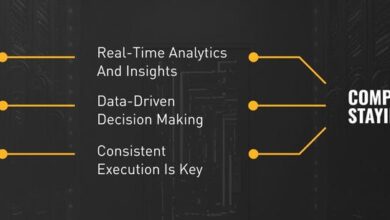Why Business Organizations Must Implement the Zero Trust Security Strategy and Execute It Diligently | by David Pui | Technology Hits | Nov, 2023

Business, Technology, and Enterprise Security
An overview of the problems, market trends, and practical tips to implement security solutions in enterprise architecture and digital transformation initiatives
This is my first article on this platform written in a white paper style to make it valuable for enterprise architects and business decision-makers, including CTOs, CIOs, CDOs, CISOs, R&D directors, and other executive-level stakeholders of prominent business and government organizations.
My goal is to share my experiences gained working as a Trusted Advisor (Enterprise Architect and Senior Solutions Architect) across various industries and business verticals — mainly focusing on Digital Transformation, Data Architecture, Cloud Solutions, and Security Transformation Business Initiatives.
I leveraged credible industry and academic white papers I reviewed and used during my R&D on Zero Trust Security Strategy Implementation to articulate my points.
As a seasoned enterprise architect in the industry, firstly, I want to highlight that enterprise architecture is not just about technology solutions. We must also consider People, Processes, Business, Security, and Data. I will explain these critical points in this article.
Cybersecurity Threats are continuing to increase, exploring any opportunities to seek vulnerability endpoints within organizations’ ICT infrastructure.
Cyber Threat Actors continue to launch attacks such as faking login pages, running persistent campaigns, introducing advanced malware, and consistently executing phishing in any possible touchpoints — endpoints, cloud applications, and network infrastructure.
According to the Zscaler Ransomware Report, between April 2022 and April 2023, the number of ransomware attacks has surged by 37.75%. With ransomware extortion attacks, the number of infected victims soared by 36.68%. There is also an emergence of encryption-less ransom attacks.
With increasing Cloud Adoption across the globe due to a new paradigm shift of market trends in the provision of highly resilient, highly scalable, highly performance, and highly performant Cloud Platforms, Security, Networks, and Infrastructure, the business systems ecosystems have changed from the traditional On-Premises Data Centres solutions to Multi-Cloud Multi Tenanted on Premise Ecosystems.
Added to the complexities of Digital Transformation, user devices such as Mobile Phones, Tablets, and Laptops across different geographical locations are becoming an increasing norm for a single user.
Because of the diverse users’ devices and touchpoints, how do you properly supply safe and secure access to the organization’s mission-critical business systems and access to personal SAAS applications?
Users and Customers all want the flexibility of BYOD (Bring Your Own Device) and CYOD (Choose Your Own Device), so how do you develop a secure E2E Authentication and Authorisation Security Implementation Strategy, Controls, and Policy and at the same time adhere to PIM Privileged Identity Management and PAM Privileged Access Management to secure Business Sensitive Information as well as Private and Confidential information.
This gives rise to the need for organizations to define, develop, and implement Zero Trust Architecture Strategy and re-think a roadmap to achieving the Digital Security Transformation.
It is an Enterprise Architecture initiative where Enterprise Architects and Business Architects need to work closely with C Level Executives, Board of Directors, Business Sponsors, Business Leads, and Key Business and Technology Stakeholders to get all stakeholders to understand the issues and complexities of the problem and the difficulties in executing the digital security transformation.
However, it is still a Business Decision whether the organization can embark on the Zero Trust Strategy Implementation journey, as many business program initiatives need funding, and the Zero Trust Strategy initiative needs to be on the priority list.
Hence, it needs to be driven by the C-Level Executives and Buy-In from the Board of Directors to ensure full organizational support, commitment, and alignment with strategic & operational drivers.
The total costs of shifting to a Zero Trust paradigm are incredibly high, and the approach to tackling the problems needs to be discussed and focus on Enterprise Security Planning. The Approach to the realization of Zero Trust Network Architecture ZTNA is critical to the success of the modernization goals.
According to R&D companies such as Grand View Research, the global market size of Zero Trust Security is estimated to be USD 24.84 Billion, and the expected Compound Annual Growth Rate (CAGR) is 16.6% from 2023 to 2030.
This also stems from the COVID-19 pandemic, where remote working is becoming a norm, and organizations are seeing this as a significant advantage for organizations to reduce procurement infrastructure costs by moving towards BYOD or CYOD strategy and hence driving the growth of zero trust security.
The rise of BYOD and CYOD allows employees to access business-critical information and Cloud SAAS applications, thereby increasing the chances of data theft and loss.
This new user landscape increases the number of potential threat actors continuously watching and finding ways to penetrate corporate networks. Hence, implementing BYOD and CYOD security strategies, solutions, standards, and policies is particularly important.





